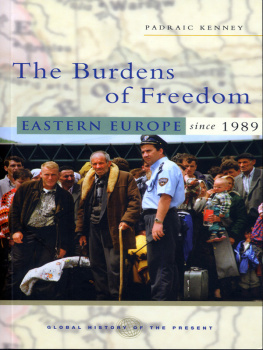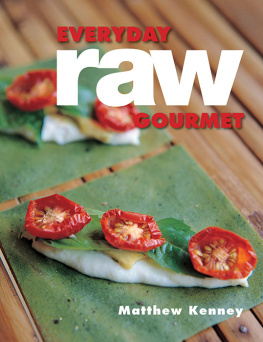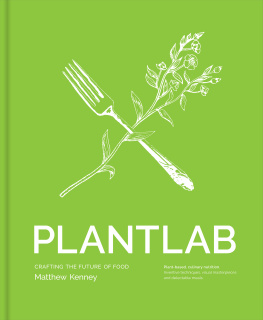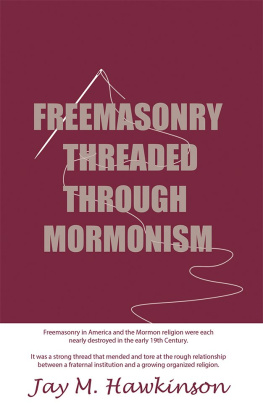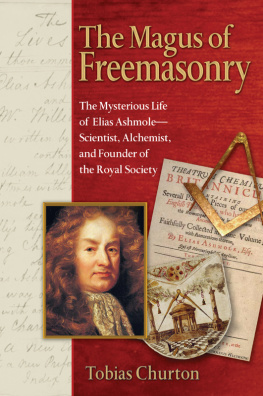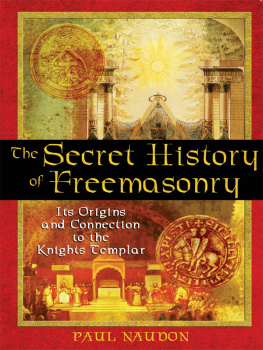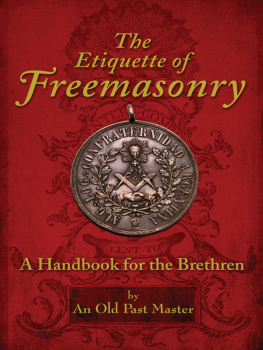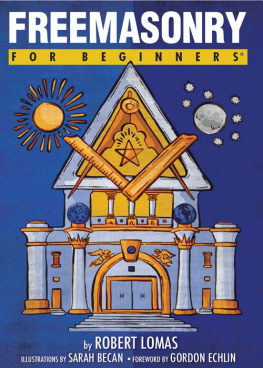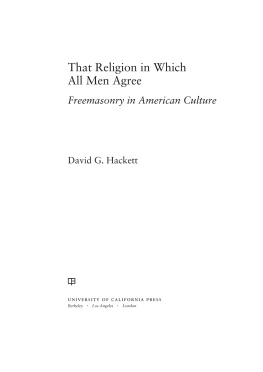Kenney - Brought to light: contemporary freemasonry, meaning, and society
Here you can read online Kenney - Brought to light: contemporary freemasonry, meaning, and society full text of the book (entire story) in english for free. Download pdf and epub, get meaning, cover and reviews about this ebook. City: Kanada, year: 2016, publisher: Wilfrid Laurier University Press, genre: Religion. Description of the work, (preface) as well as reviews are available. Best literature library LitArk.com created for fans of good reading and offers a wide selection of genres:
Romance novel
Science fiction
Adventure
Detective
Science
History
Home and family
Prose
Art
Politics
Computer
Non-fiction
Religion
Business
Children
Humor
Choose a favorite category and find really read worthwhile books. Enjoy immersion in the world of imagination, feel the emotions of the characters or learn something new for yourself, make an fascinating discovery.

- Book:Brought to light: contemporary freemasonry, meaning, and society
- Author:
- Publisher:Wilfrid Laurier University Press
- Genre:
- Year:2016
- City:Kanada
- Rating:4 / 5
- Favourites:Add to favourites
- Your mark:
- 80
- 1
- 2
- 3
- 4
- 5
Brought to light: contemporary freemasonry, meaning, and society: summary, description and annotation
We offer to read an annotation, description, summary or preface (depends on what the author of the book "Brought to light: contemporary freemasonry, meaning, and society" wrote himself). If you haven't found the necessary information about the book — write in the comments, we will try to find it.
Brought to light: contemporary freemasonry, meaning, and society — read online for free the complete book (whole text) full work
Below is the text of the book, divided by pages. System saving the place of the last page read, allows you to conveniently read the book "Brought to light: contemporary freemasonry, meaning, and society" online for free, without having to search again every time where you left off. Put a bookmark, and you can go to the page where you finished reading at any time.
Font size:
Interval:
Bookmark:
BROUGHT TO LIGHT

COPYRIGHT NATALIE KENNEY
Contemporary Freemasonry, Meaning, and Society
J. SCOTT KENNEY

This book has been published with the help of a grant from the Canadian Federation for the Humanities and Social Sciences, through the Awards to Scholarly Publications Program, using funds provided by the Social Sciences and Humanities Research Council of Canada. Wilfrid Laurier University Press acknowledges the financial support of the Government of Canada through the Canada Book Fund for its publishing activities. This work was supported by the Research Support Fund.

Library and Archives Canada Cataloguing in Publication
Kenney, J. Scott (James Scott), 1961, author
Brought to light : contemporary freemasonry, meaning, and society / J. Scott Kenney.
Includes bibliographical references and index.
Issued in print and electronic formats.
ISBN 978-1-77112-194-1 (paperback).ISBN 978-1-77112-195-8 (pdf).
ISBN 978-1-77112-196-5 (epub)
1. FreemasonryCanada. 2. FreemasonsCanadaSocial conditions. 3. FreemasonsAtlantic ProvincesInterviews. 4. Kenney, J. Scott (James Scott), 1963. 5. FreemasonsCanadaBiography. I. Title.
HS558.K45 2016 366.10971 C2015-905581-4
C2015-905582-2
Cover design by Angela Booth Malleau. Front-cover image Dekanarysas | Dreamstime.com. Frontispiece imagean interpretation of a Masonic stained-glass windowcreated in 2015 and executed with colour markers on 8-x-11-inch card stock. Copyright Natalie Kenney. Text design by Angela Booth Malleau.
2016 Wilfrid Laurier University Press
Waterloo, Ontario, Canada
www.wlupress.wlu.ca
This book is printed on FSC certified paper and is certified Ecologo. It contains post-consumer fibre, is processed chlorine free, and is manufactured using biogas energy.
Printed in Canada
Every reasonable effort has been made to acquire permission for copyright material used in this text, and to acknowledge all such indebtedness accurately. Any errors and omissions called to the publishers attention will be corrected in future printings.
No part of this publication may be reproduced, stored in a retrieval system, or transmitted, in any form or by any means, without the prior written consent of the publisher or a licence from the Canadian Copyright Licensing Agency (Access Copyright). For an Access Copyright licence, visit http://www.accesscopyright.ca or call toll-free to 1-800-893-5777.
When I was initiated into the Freemasons in September 1999, just a few months after receiving my PhD from McMaster University, I was struck by something obvious. Extensively trained in symbolic interactionist theory during my graduate studies, I saw unfolding before my eyes an organization that emphasized the use of carefully coordinated ritual actions, combined with complex, multi-layered symbolism, to socially construct meaning for its members. The desire to conduct a study was born. After all, how could I resist utilizing a sociological approach, which emphasizes the pragmatic construction of meaning through symbolic actions, as a way of studying an organization that utilizes symbolic, ritualized actions to construct meaning?
At first I moved slowly. I felt that somebody must have done this before. It was just too obvious. I did some research and found that there was, indeed, a sociological literature. Beginning with Georg Simmels (1908) publication Sociology of Secrecy and of Secret Societies, which characterizes so-called secret fraternal organizations as fostering boundaries, separation, and corresponding validation such that members come to see themselves as a sort of aristocracy, there have been many sociological works on the Freemasons and fraternal organizations. Perhaps most notably, Mark Carnes (1989) argued in Secret Ritual and Manhood in Victorian America that fraternal ritual provided solace and psychological guidance during young mens troubled passage to manhood. Relatedly, Mary Ann Clawson (1989) asserted that nineteenth-century fraternalism articulated a gendered vision of brotherhood in an era of class conflict, attracting a multi-class membership and organized social solidarity centred on the ambiguous symbolic figure of the artisan, the producer-proprietor, when this role was under stress and a growing assertion of a feminine vision of social and affective life threatened to undermine male institutional solidarity.
Yet these, and many other studies, while illuminating in many ways, struck me as problematic. They tended to emphasize the big picture (i.e., macro-level structural dynamics filtered through todays sociological preoccupations with class and gender). While these could not be ruled out entirely, relatively little emphasis was placed on the likely more diverse, pragmatic constructions of meaning engaged in by the membership. Furthermore, the vast majority of extant studies focused on the past. Little work had been done on Freemasons and the meanings that they construct in the very different social world inhabited by members today. Given the vast social changes that took place in the twentieth century, particularly from the 1960s onward, along with the decline of social capital and community organizations, there appeared to be a crying need to study the meanings constructed by contemporary Freemasons. I felt that these major theoretical and empirical gaps called for contemporary study.
Given these issues, I initially attempted to identify multiple theoretical issues germane to an interactionist study of this organization. While difficult to imagine a complete list before entering the field, I first attempted in 2005 to articulate the relevance of various sensitizing concepts in a paper presented at the Canonbury Masonic Research Conference in London. This was subsequently published in 2007 as Ritual Actions and Meaning among Freemasons in the fourth volume of The Canonbury Papers, Freemasonry and Initiatic Traditions (edited by R. A. Gilbert), part of which is adapted in chapter 1 of this volume.
Around this same time, I experienced a great stroke of luck. Having some years before appeared in the documentary film Inside Freemasonry (Arcadia Entertainment, 2004), a film about contemporary Freemasons produced by a member of my first lodge, I asked him if he still had the film footage. Yeah, he responded, do you want it? This resulted in being provided with a bankers box of fifty-eight videotapes, including detailed interview data from twenty-seven individuals, all collected with written consent to disseminate their comments on television. This provided an invaluable boost to my project.
In short order I applied for research funding to conduct a more extensive qualitative study in this area. In 2006, I was awarded a $32,600 Research Development Initiatives Grant from the Social Sciences and Humanities Research Council of Canada as well as a $6,900 Vice Presidents Research Grant from Memorial University to fund this study. After receiving ethics clearance, I spent the autumn of 2006 to December of 2007 travelling throughout Newfoundland and Nova Scotia interviewing Freemasons about their experiences, activities, involvement, and, perhaps most importantly, the meanings they derived from their activities in the Masonic order.
Next pageFont size:
Interval:
Bookmark:
Similar books «Brought to light: contemporary freemasonry, meaning, and society»
Look at similar books to Brought to light: contemporary freemasonry, meaning, and society. We have selected literature similar in name and meaning in the hope of providing readers with more options to find new, interesting, not yet read works.
Discussion, reviews of the book Brought to light: contemporary freemasonry, meaning, and society and just readers' own opinions. Leave your comments, write what you think about the work, its meaning or the main characters. Specify what exactly you liked and what you didn't like, and why you think so.

